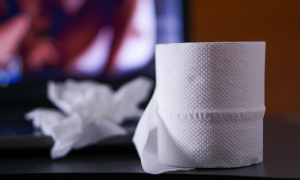
Celebrate the Start of #safesexysummer in June
It’s time to celebrate the start of summer! June is filled with national observances to help you start the summer off right. We’re here to help make June the start of a #safesexysummer.
Scabies:
Fast Facts
Sexual Transmission
Scabies are passed on through close physical contact. Transmission is more likely when partners spend the night together than during a brief sexual encounter.
Nonsexual Transmission
Sexual contact is not necessary to spread scabies. Prolonged contact between household members may allow transmission to occur. Transmission is also possible through prolonged contact with infested linens, furniture, or clothing. It is unlikely that scabies would be transmitted during casual contact (e.g. shaking hands or hugging) or contact with inanimate objects, such as a toilet seat.
The type of scabies that infest humans is specific to human beings and are different than the type that infest dogs and other animals (more commonly known as mange).
Common sites of infestation are: webs and sides of fingers and toes, pubic and groin area, armpits, bends of elbows and knees, wrists, navel, breasts, lower portion of buttocks, penis and scrotum, and waist and abdomen. Rarely, they are found on the palms of the hands, the soles of the feet and the neck upward.
If a person has never been infected with scabies before, symptoms appear approximately 4 to 6 weeks after infection. If a person has been infected with scabies before, they will begin to experience symptoms within 1 to 4 days after infection, because of previous exposure to scabies.
A person is considered infectious from the time they become infected until treatment is successfully completed. Linens and clothing are considered infectious until treatment or until 2 weeks after the last exposure. After treatment, a person may unknowingly become re-infested through exposure to the primary source of contact or contact with a different infested source.
Recommended Treatment
Alternative Treatments
Scabies doesn’t usually cause anything more than discomfort and inconvenience. Occasionally, secondary bacterial infections may occur due to aggressive scratching.

It’s time to celebrate the start of summer! June is filled with national observances to help you start the summer off right. We’re here to help make June the start of a #safesexysummer.

Many people who take doxy PEP say it gives them peace of mind in their relationships and sex life. We sat down with Oscar Alexis, Efthimios, and Maxfield Haynes to talk about doxy PEP and get their perspective.

You can get a UTI from sex, but it’s not what you think. Urinary tract infections (UTIs) are not sexually transmitted infections (STIs). They’re not considered contagious. And yet, they can be a result of sex.

Today there are a lot of experts offering sexual health information and advice on websites and social media, but in the 1980s it seemed like everyone was listening to just one: Dr. Ruth Westheimer.

A new paper suggests that there are biological and evolutionary reasons that we masturbate and looks to our ape ancestors for evidence. There is evidence starting around 40 million years ago that the ancestors of all monkeys and apes did indeed masturbate.

Talking about sexual health with a provider would be easier if we didn’t have to be naked when we do! Martha Kempner and Logan Levkoff help you “own your awkwardness” and get the care you need.

Because sex involves both the body and the mind, our self-image can have a strong affect on our sexual health. It’s important to realize – and remind yourself every day – that just as you have a unique mind with its own gifts to offer

Consent is an agreement that is willfully given without any external pressure or factors. In order for someone to consent to sexual activity participants must continuously communicate—before, during, and after sexual activity.
ASHA believes that all people have the right to the information and services that will help them to have optimum sexual health. We envision a time when stigma is no longer associated with sexual health and our nation is united in its belief that sexuality is a normal, healthy, and positive aspect of human life.
ABOUT
GET INVOLVED
ASHA WEBSITES
GET HELP
© 2025 American Sexual Health Association